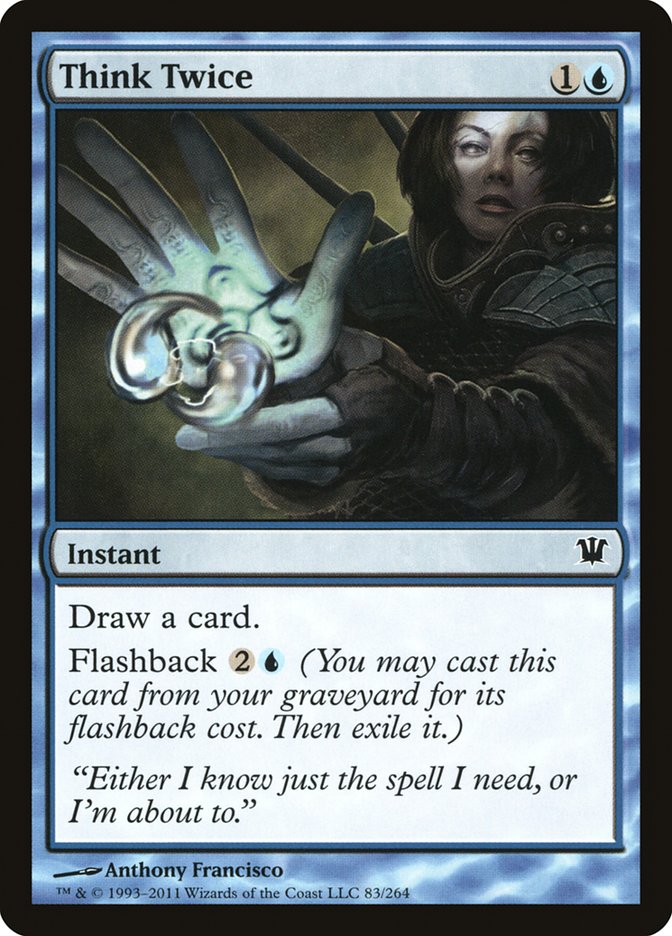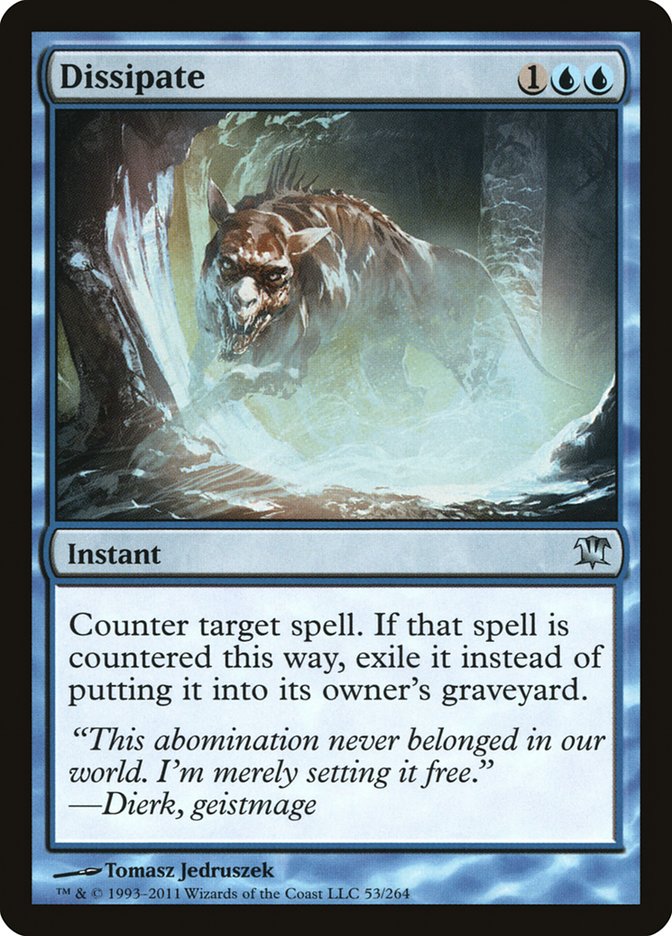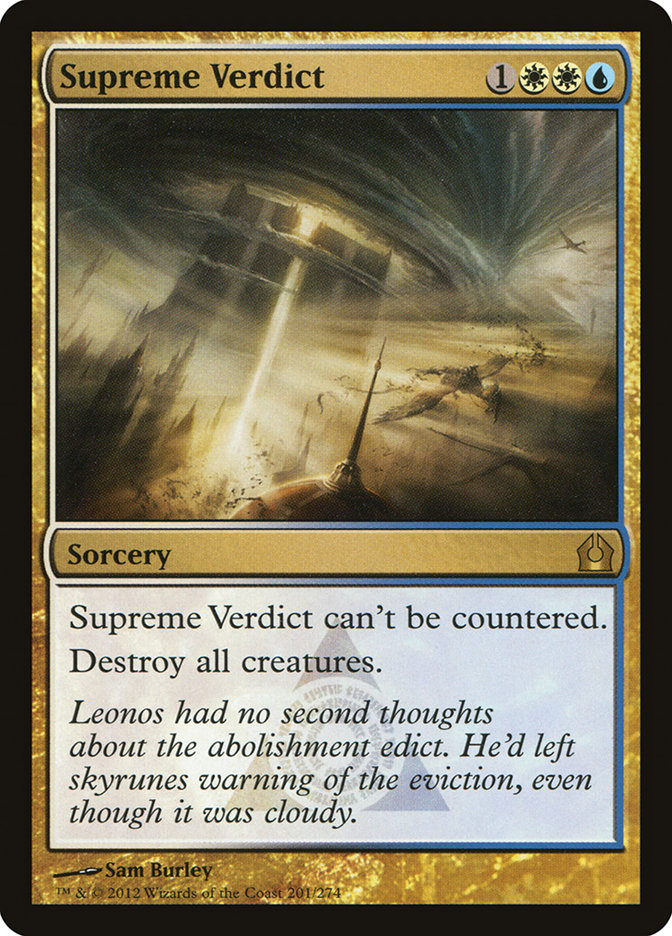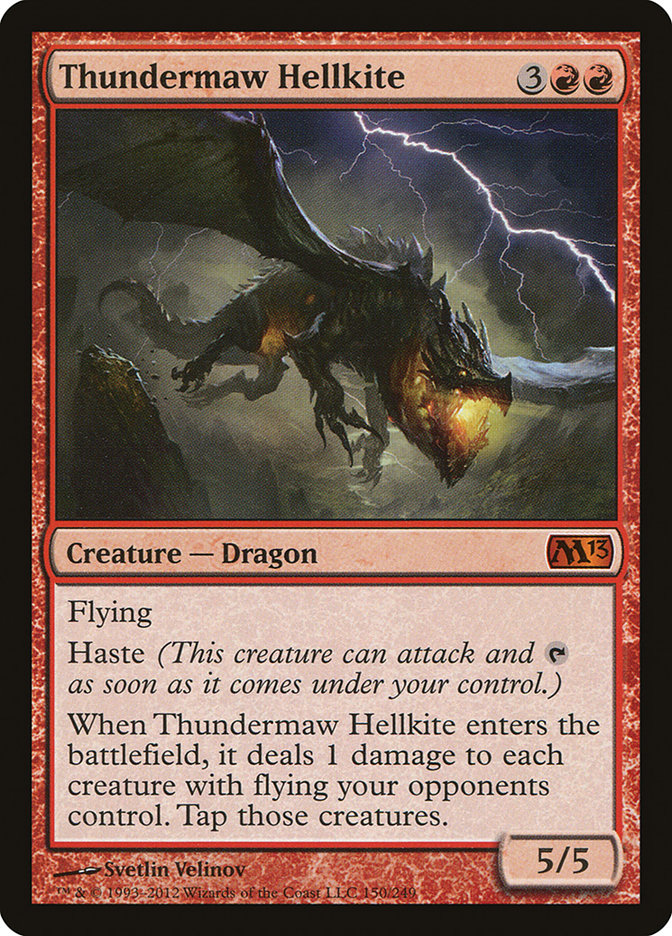I arrived in Miami on Thursday night, and after spending Friday at the beach with Chase Kovac and Vidianto Wijaya, I found myself at the event site. There we encountered Brad Nelson, who scoffed at my deck choice. He told me that it "didn’t beat anything" and that I was doing myself a disservice by not playing something else. Little did Brad know that those were probably the most motivating words he could have said to me. I had something to prove.
My preparation in the week leading up to Miami was relatively stress free. I knew long before the tournament what deck I would play, so it was just a matter of working on a few specific card choices. Sure, Standard had changed a bit, but I didn’t think it was cause for alarm. There are some players who look at a new metagame and then run, hide and a build a completely new deck. Luckily, I’ve chosen a deck where all I have to do is change a few cards in my maindeck and sideboard. After playing in the StarCityGames.com Standard Open in Philadelphia and on Magic Online all week, this is the 75 that Chase Kovac and I registered for the Grand Prix.
Creatures (10)
Lands (24)
Spells (26)

Card Choices
A few important notes on card choices:
4 Think Twice, 26 Land
Think Twice is one of the best things you can do in any control mirror or grindy matchup like Jund or Junk Reanimator in game 1. I never want to miss a land drop with this deck, so having a high land count and the maximum copies of Think Twice helps with this. In a number of matchups, you want to be able to cast a very large Sphinx’s Revelation and follow it up by casting numerous cheap interactive spells on the following turn.
Counterflux Over Dissipate
Junk Reanimator had slowly fallen out of favor in the weeks before this Grand Prix, but I still expected it to be one of the most played decks. Naturally, Counterflux is better against blue and Dissipate is better against Junk, but I think the upside of Counterflux is much higher. The Junk matchup is still winnable and even favorable with Counterflux in your deck; you just have to work a little bit harder for it. Having access to Counterflux (especially against decks with Aetherling) can really tip a control mirror in your favor.
Supreme Verdict
I’m not a huge fan on Supreme Verdict is most matchups aside from Bant Hexproof and Naya Blitz. However, I think it is very important when building a Sphinx’s Revelation deck to be able to win any game when you have drawn a ton of extra cards and "have your deck in your hands." Having access to exactly one Supreme Verdict (two with Snapcaster Mage) allows you to get out of tough spots in very long games, particularly against Junk Reanimator and Jund.
Zero Maindeck "Win Conditions"
I’ve tried plenty of win conditions for this deck—Aetherling; Jace, Memory Adept; Assemble the Legion; maindeck Thundermaw Hellkite—but they all suffer from the same problem of being virtually dead against any aggressive deck. With five counterspells already in the maindeck, I felt like additional clunky cards in those matchups would take away from the deck’s strength, which is beating aggressive decks. In addition, most decks have dead cards against you, so a well-timed Sphinx’s Revelation should be more than enough to put any game away with just Restoration Angel, Snapcaster Mage, and Moorland Haunt.
As a result, game 1s with this build often take longer than they might otherwise, but I think that this configuration has a higher game 1 equity against the whole field. These types of win conditions are training wheels—they help you win games that you are already going to win but often hurt you in games where you are trying to come back from behind.
Sideboard Thundermaw Hellkites
Keeping in mind my commentary on win conditions, the post-sideboard dynamic is very different for midrange and control matchups. Opponents will be able to cut their weaker interaction for spells like Duress or troublesome creatures like Sin Collector or Acidic Slime, all of which help fight Sphinx’s Revelation. They will have access to hard-to-answer threats like Obzedat, Ghost Council; Underworld Connections; Ruric Thar, the Unbowed; or a variety of planeswalkers. In short, opponents will be better at fighting your Revelations and better at winning a long game through a resolved Revelation. On average, they will also be worse at killing creatures, which is part of the allure of Thundermaw Hellkite.
The basic idea of boarding in Thundermaw Hellkite is that opponents who try to go "big" against you will be underprepared for an aggressive tempo-oriented game plan. Thundermaw Hellkite also serves as an answer as well as a threat because of its ability to fight Lingering Souls and attack planeswalkers out of nowhere. Though I boarded in Thundermaw in a fairly high percentage of my matches at the Grand Prix, probably above 50%, I think the card fits much better as a sideboard plan. Even when an opponent knows it is coming, they can’t do much about it without diluting their deck further. It’s not as though Hellkite is any easy card for any deck to answer.
Thundermaw Hellkite allowed me to save a ton of sideboard space since I made it my plan against midrange decks like Jund and Junk Reanimator, control decks like the mirror and Esper, and any form of The Aristocrats. The rest of the sideboard, featuring cards like Dispel and Clone, was built with this plan in mind.
Sideboarding Plans
I don’t typically like giving sideboard guides, but I think an overview of my plans may be relevant. I’ll give more general advice than specific numbers to bring in and out because sideboarding is very dependent on the opponent’s list as well as how you expect the game to play out and your own personal play style. The things I like best about this deck also make it very difficult to sideboard with.
Against Junk Reanimator
In this matchup, I like to cut Augur of Bolas and some number of Azorius Charms while bringing in Clone and Thundermaw Hellkite. I like Pillar of Flame regardless of their list because of how good it is against mana creatures and its ability to keep Acidic Slime and Sin Collector in check.
Against Jund
Snapcaster Mage can be a liability due to Ground Seal, and I don’t think a 2/1 body is very good here. I like bringing in Renounce the Guilds, Oblivion Ring, Clone, and a couple Thundermaws while also cutting Pillar of Flames.
Against The Aristocrats
Renounce the Guilds, Izzet Staticaster, and Thundermaw Hellkite are all-stars here. I don’t like Supreme Verdict very much at all and would recommend cutting them. Warleader’s Helix is pretty bad against all the sacrifice effects, and planeswalkers shouldn’t be a problem between Thundermaw and Oblivion Ring. Cutting some number of counterspells and Turn // Burn should fill out the rest of the sideboard.
Against Bant Hexproof
Turn // Burn and expensive counterspells are bad, while Renounce and Verdict are obviously the best cards. It can be tempting to cut slow cards like Think Twice or Augur, but I think they are very important to find key pieces of interaction.
Against R/G Aggro
I like Supreme Verdict less than most people in this matchup, and I usually only bring the second one in on the draw. This, Bant Hexproof, and Naya are the matchups where you do not bring in Thundermaw Hellkite. Sideboarding is all about cutting counterspells and some number of Think Twice for cheap interaction like Renounce and Pillar.
Against Naya
Naya is probably the hardest deck to sideboard against since the lists vary so much. You can want anywhere between zero to all five counterspells depending on their configuration. While others may disagree, I would not recommend bringing in Thundermaw or Clone here. Your Restoration Angels and Helixes should be enough to win the game. Oblivion Ring and Renounce are great in this matchup, with the latter only being awkward if they have an uncontained Voice. This matchup is all about making sure you use the right answer for each threat and don’t leave yourself open, so I would recommend using narrow answers first and boarder ones later. Assemble the Legion, Domri Rade, and Thundermaw Hellkite are the most troublesome cards.
Against Control
Cut Pillar, Supreme Verdict, and some Turn // Burns or Azorius Charms for Dispel, Hellkite, and Oblivion Ring. Clone can also be good against certain control decks like Bant. Use Renounce sparingly and only if you are absolutely sure they have "targets" for it.
Grand Prix Miami
The Swiss
The Grand Prix itself went about as smoothly as it could have. I only lost two games on my way to 12-0, in round 6 against Junk and round 12 against eventual champion Reid Duke Jund deck. In order, I faced the following over my twelve rounds of Swiss after byes.
R/G Aggro 2-0
The Aristocrats: Act 2 2-0
Junk Reanimator 2-1
Bant Hexproof 2-0
Grixis Control 2-0
Four-Color Reanimator 2-0
Junk Reanimator 2-0
Naya Midrange 2-0
Jund Midrange 2-1
Bant Hexproof 1-2
R/G Aggro ID
Naya Midrange ID
One of the most interesting games I played in the tournament was my game 2 against Reid, which can be found here at around the 2:45 mark (though the whole match is probably worth watching).
Via Liliana of the Veil and Rakdos’s Return, Reid was able to get rid of all three of my Sphinx’s Revelations early in the game. Given that I had sideboarded out all of my Snapcaster Mages, I didn’t really have much staying power if the game were to go long, and I was significantly behind on mana as well. The critical turn of the game came as Reid attacked his Ruric Thar, the Unbowed and a Beast token into my two Restoration Angels. I had five lands, an Azorius Charm in hand, and a Think Twice in my graveyard.
There were two ways I could play the game from this point. I could either double block the Ruric Thar with my Angels and trade, using Azorius Charm to deal with his Beast token and my Think Twice to try to get ahead. However, given my lack of Revelations left and the fact that Reid had twice as many lands as me, including a Wolf Run, I wasn’t sure that I could beat as much as a single Thragtusk without getting lucky. Instead, I decided to Azorius Charm the Ruric Thar and race back, trying to dig for an answer in my turn of reprieve. Luckily, I found a Counterflux, and a Warleader’s Helix two cards down locked up a game that looked all but lost.
Top 8
My Top 8 match against Brad Nelson was an ironic but inevitable collision given our conversation on Friday. We played three relatively close games, though I got extremely lucky to win game 2 out of a tough spot. In game 3, I was put in an awkward spot of casting either Augur of Bolas or Sphinx’s Revelation with nothing other than lands in hand. Given that I was out of gas, I wanted my Revelation to be as big as possible to give me the best chance of taking over the game. I bricked on my Augur, and Brad drew Obzedat, Ghost Council to increase his clock by so much that I died without even getting to cast my Revelation. I still think it was correct to play the Augur since basically any spell would buy me time to cast my Revelation or potentially deal with either his Varolz, the Scar-Striped or Obzedat, which were the relevant threats.
I thought Brad played very well in game 1 in particular, where he was extremely patient with his Lingering Souls tokens and Gavony Township. This line of play was particularly punishing for my land light draw, as he was able to bottleneck my mana on a few critical turns rather than letting me use it efficiently. I think I would’ve had a good chance of winning the game if I’d drawn a few more lands early on, but Brad played perfectly to cut down on my options.
I was definitely disappointed to not advance further after a tournament where I very rarely felt even threatened in games. However, I was ecstatic to see my friend and teammate Reid Duke take down the whole thing with his Jund deck. Reid’s victory solidified one of my biggest takeaways from the tournament, which is the value of experience with a particular deck.
The last three undefeated players in the tournament were myself, Brad, and Reid, all playing a deck with which we have more experience with than basically anyone else in the field. The metagame and Standard environment is extremely open-ended in terms of which strategies are good, so the players with practice and solidified game plans were able to rise to the top.
I felt like my 75 performed exceptionally, with the only questionable cards being the fourth Pillar of Flame and third Renounce the Guilds in the sideboard. One of my best friends, Chase Kovac, went 12-3 with an identical 75, losing his win and in for Top 8 despite starting the tournament 2-2. Between the two of us, there was no one deck in the field against which I felt we were underprepared or significantly behind.
Sunday night in Miami was the perfect wind down from a stressful but fun Grand Prix. After getting rained on in an attempt to go to the beach, I found myself at a poolside gathering of around 50 Magic players where the primary topic of conversation centered on my next big task: choosing a ballot for the Pro Tour Hall of Fame. I’ve been putting off getting a Twitter for a long time, but in the face of missing out on important Hall of Fame discussion, I think I may finally give in, so keep an eye out for that in the next few days.
I’m excited to continue to represent U/W/R this weekend at the StarCityGames.com Standard Open in Worcester, Massachusetts and continue to explore the legacy machine that is Esper Deathblade. That deck is the real deal.





